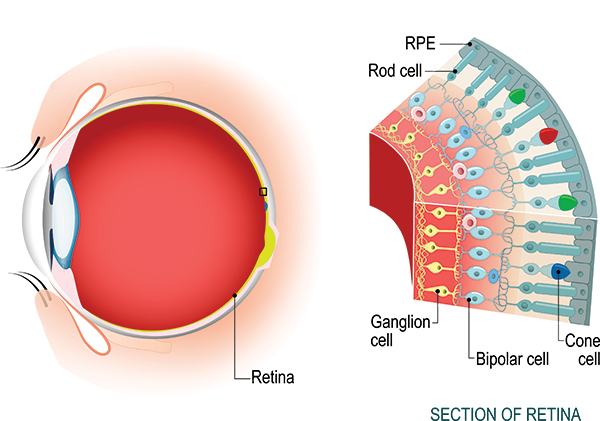Shaaf Eye Center can help individuals diagnose, monitor and treat retinal conditions. Coupling state-of-the-art therapy and advanced technologies with customized care, Shaaf Eye Center's ophthalmologists treat macular degeneration, macular edema, diabetic retinopathy, retinal tears/retinal detachments, retinal vascular occlusion, inflammatory eye disease and many other retina conditions that can cause vision loss. If you need help with your retinal condition, call us today to book your comprehensive eye exam.

The retina is at the back of your eye and it has light-sensitive cells called rods and cones. When you look at something, light hits the retina; the rods and cones send electrical signals to the brain along the optic nerve. Its job is to receive light from the lens, convert it to neural signals and transmit them to the brain for visual recognition.
Any damage to your retinal tissue can disrupt this important connection between the eye and the brain, ultimately causing vision disturbances (or even blindness if left untreated).
Retinal damage is caused for a variety of reasons, and depending on your specific retinal condition, treatment can slow the disease and preserve, improve or restore your vision.
It’s important to pay attention to any changes in your vision and find care quickly. Seek immediate medical attention if you suddenly have floaters, flashes or reduced vision. These are warning signs of potentially serious retinal disease.
Many retinal diseases share some common signs and symptoms. These may include:
Risk factors for retinal diseases might include: